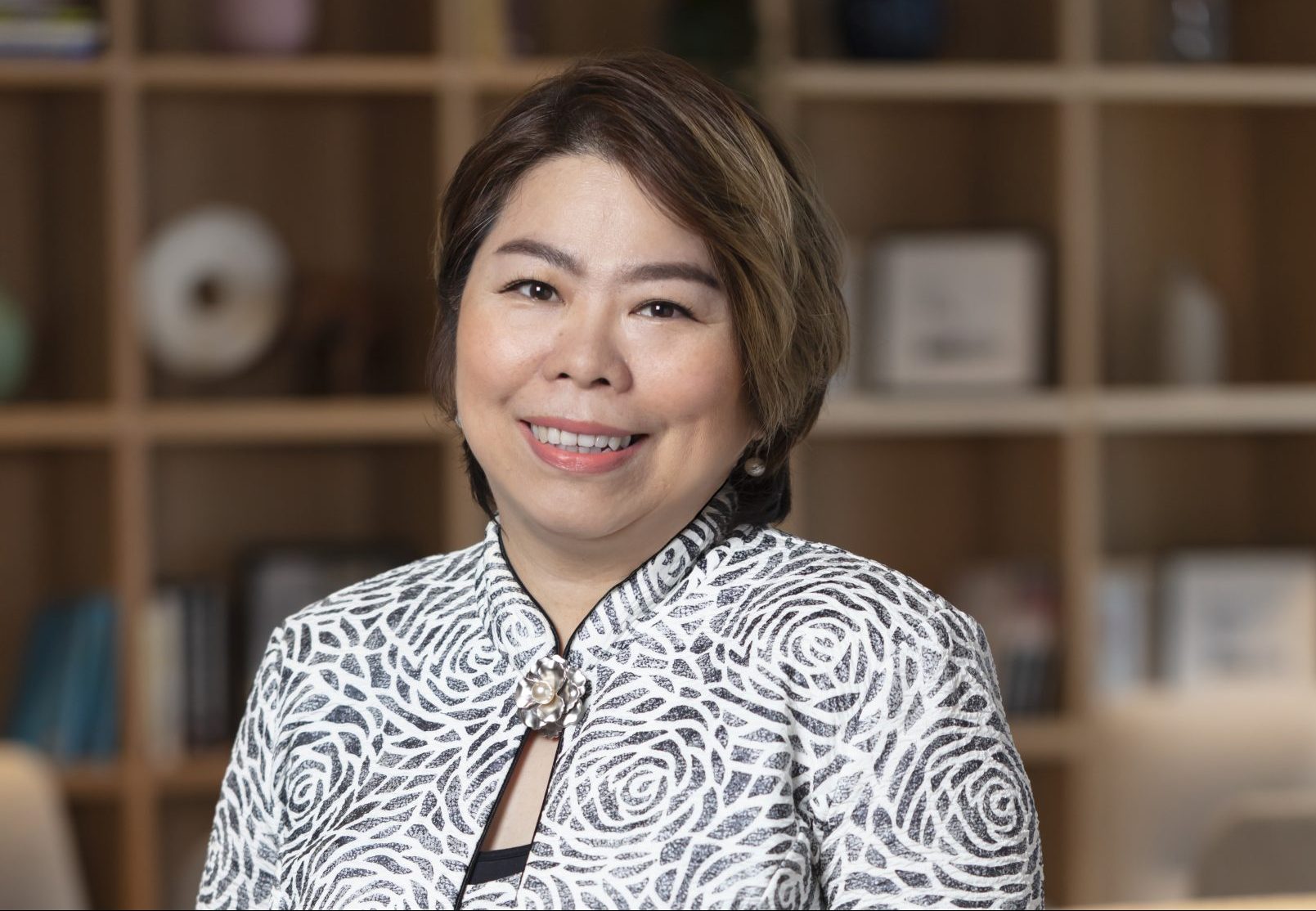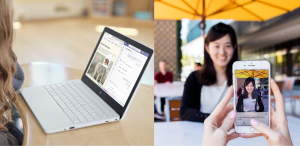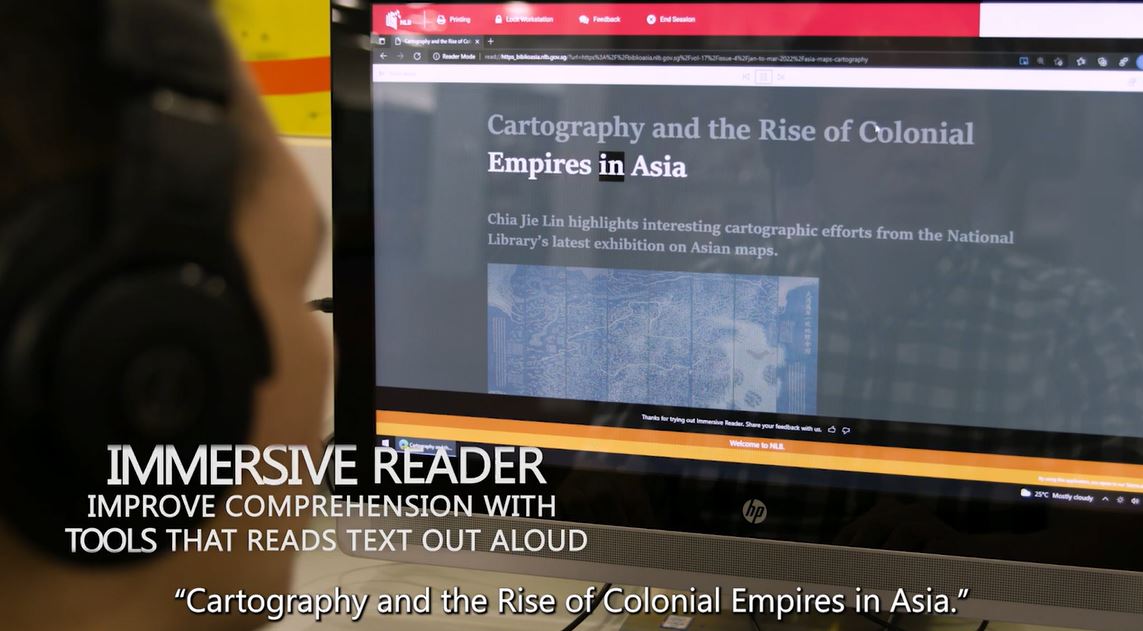
By Lum Seow Khun, Director, Public Sector Group, Microsoft Singapore
For 46-year-old Edwin Khoo, the ongoing technology revolution does not just mean more gadgets or apps that he can explore and use. The digitalization of our world today means that he can now have better access to information in a more efficient, equitable, and cost-effective manner, allowing him to lift his head up high and have the dignity to continue thriving in our society.
Edwin, who was born blind, cannot perceive any light or color. Since birth, he has relied on his other senses and people’s support to navigate his surroundings. The digital transformation that we are experiencing today has turned a visual world into an audible experience for Edwin, allowing him to become more independent and involved in society.
Technology as an enabler for all
An estimated 3% of residents in Singapore have some form of disability. However, only one in 10 of these people have access to the tools they need to contribute to the economy. As we democratize access, technology can serve as an equalizer and help empower the disabled as we build a resilient, digitally inclusive Singapore together.
For Edwin, the advancement in technology means that he can rely less on others, and instead leverage readily available technological tools. From having to request for people for help to read aloud information, such as those in books or on nutritional labels, he can now use accessible technologies like Microsoft’s Immersive Reader to narrate written content. In addition, with many of these tools now being built into software and hardware, this has reduced the need for Edwin to purchase third-party screen readers and solutions, which can be pricey and cumbersome to integrate with existing tools. “With the evolution of technology, things have become a lot for me, and it is easier to integrate into society,” Edwin shared.
Some of the tools he uses include Microsoft’s Immersive Reader. This is a free tool that is built into most of Microsoft’s solutions, including the Microsoft Edge browser, Word, Outlook and Microsoft Teams. The tool implements proven techniques to improve reading and writing for people regardless of their age or ability and is often used by students to help provide more personalized access to their curriculum. For visually disabled persons like Edwin, Immersive Reader has helped to improve his comprehension by offering text decoding solutions that reads text out loud, breaking it into syllables with increased spacing between lines and letters. Immersive Reader also eliminates clutter on web pages, such as banner ads and pop-ups that the visually abled can easily avoid, to present a more readable and accessible page. For Edwin, this means that he can now navigate websites and desktop applications conveniently and seamlessly.
Edwin also uses Seeing AI, a smartphone app, daily. Seeing AI is a Microsoft AI for Good app for accessibility that brings together the power of the Microsoft Cloud and artificial intelligence (AI) to help the visually impaired navigate their day. Designed with inclusivity in mind, the app is tested by and with the disability community via nonprofit organizations around the world. The app taps on Azure Cognitive Services, such as computer vision and one’s smartphone’s camera, to read words and describe objects, narrating the world around its user. For Edwin, this ability to read effortlessly has opened doors to better communicate with others, and enhanced his knowledge acquisition.
Immersive Reader in use (Left); Seeing AI app in use (Right)
Partnerships as key to driving inclusivity and accessibility
As a trusted global leader in strategic digital transformation, Microsoft has consistently built inclusivity and accessibility into its products by design. In addition, Microsoft has been actively collaborating with like-minded partners, such as the National Library Board (NLB), to create improved accessibility for a resilient and digitally inclusive Singapore.
Microsoft’s partnership with NLB aims to equalize accessibility to library resources through responsible AI powered technology, such as the Immersive Reader. Over the next few months, NLB will be working towards making this inclusive technology available to its patrons. The Immersive Reader will employ techniques to improve reading and writing, such as translating content from English to mother tongue languages, and offer text decoding solutions for students with dyslexia and other learning needs. This will help people with learning disabilities enrich their awareness of the world around them. These efforts are part of Microsoft’s and NLB’s vision to elevate learning and create accessibility for every person and every organization on the planet to achieve more.
Charting a resilient future forward
According to Edwin, these initiatives by Microsoft and NLB will allow people like himself to gain access to greater information. “We hope to see many more establishments coming on board to understand the importance of inclusiveness and ensuring that nobody is excluded. This will allow us to lift our heads up high, and have the dignity to continue living in this very challenging, but exciting, society of ours,” he said.
At the end of the day, digital inclusivity and resilience are built by putting people at the center. Microsoft remains committed to empowering its communities, as we leverage technology to drive societal impact locally. Ongoing partnerships and initiatives, such as the Microsoft APAC Enabler Program and the Digital for Life movement in Singapore will help to improve accessibility for all, bridge the digital divide, and help the disabled chart their own path in society. Together, our collective efforts will help to foster a culture of inclusivity and make technology accessible for all as we build a resilient, digitally inclusive Singapore.

